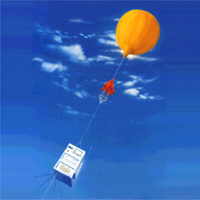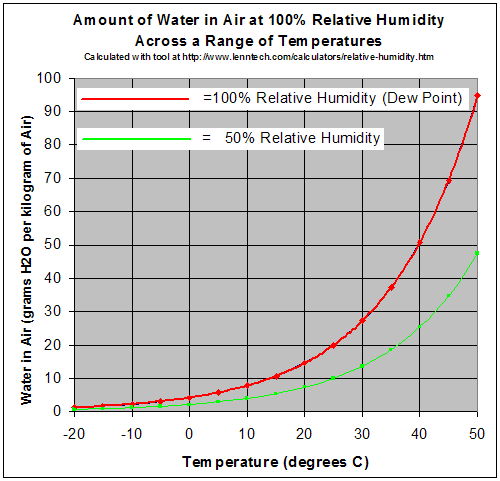- Air Homepage
- Weather Equipment
- Wireless Thermometers
Explore Radiosondes and Humidity Gauges with Wireless Thermometers
It's not uncommon for wireless thermometers and radiosonde instruments to have little quirks. Data peculiarities that scientists should know.
Search for more about weather sensing.
Radiosonde Secrets and Sensor Flaws 🎈Did you know a tiny weather spy sent up on a balloon can be fooled by things like getting wet or moving too fast? Rather than just trusting the raw data, learn how time lags, moisture release, and icy conditions can skew temperature and humidity readings.
You want to know: What is a radiosonde and what does it do? A radiosonde measures atmospheric parameters and sends the data to a receiver. Temperature, pressure, and humidity are measured with it attached to a weather balloon as explained below. Weather patterns are measured and tracked with radiosondes.
Using Weather Balloons and Radiosondes for Safety and Science
Pretend you're a Radiosonde salesperson ... Here are some compelling selling points to get people to buy your weather balloons and radiosondes:
- Meteorologists can make more accurate weather predictions with the help of weather balloons and radiosondes. Explain how this accuracy can help individuals and businesses plan their activities, mitigate risks, and make better decisions.
- Weather balloons and radiosondes improve safety. They help monitor severe weather conditions, such as storms and hurricanes, helping authorities predict them before they ever arise and issue timely warnings and enabling people to protect themselves and their property.
- Promote scientific curiosity and learning with weather balloons and radiosondes. Highlight how they help students, weather enthusiasts, and science lovers learn about Earth's atmosphere, climate patterns, and meteorological phenomena. Learn about meteorology hands-on and pursue knowledge.
- Show how weather balloons and radiosondes support environmental monitoring. Measure atmospheric variables like temperature, humidity, and air pressure to study climate change, air quality, and other environmental factors. In order to solve environmental problems and develop sustainable practices, we need this info.
- Highlight any technological advances in your weather balloons and radiosondes. Put your products at the forefront of meteorological instrumentation, ensuring reliable and high-quality data collection, with improved sensor technology, data transmission capabilities, or durability.
- Demonstrate how weather balloons and radiosondes can be used for more than just meteorology. Find out how they're used in research, aviation, environmental monitoring, agriculture, and other industries. It broadens your products' appeal and shows their relevance.
- Keep customers happy by being reliable and providing ongoing support. Demonstrate that your wares are built to last, backed by thorough testing. Provide customer support, training, and maintenance services to keep your customers happy.
It's important to emphasize the value and significance of weather balloons and radiosondes in understanding and predicting weather patterns, promoting safety, and advancing scientific knowledge by presenting these compelling selling points.
Even so, radiosondes and their sensors aren't perfect. Keep reading.
Stuff in the air - The stuff attached to the weather balloon.
Wireless thermometers are called thermistors. Temperature is measured by an electrical resistor whose resistance varies with temperature. One's performance can be affected by some factors, though.
Calibration - They conform to a curve within 0.2°C. The best temperature for them is between -90 and 60 degrees.
Time lag - A sudden temperature change can take up to a few seconds for the weather instrument to respond. The lag is the time it takes for the sensor to show a change of 63.21% from the original temperature.
Moisture - You feel colder when you're wet. Thermometers do the same thing when they get wet. The thermistor releases latent heat of evaporation. When that happens, it can actually read colder than it should. It might be the wet-bulb temperature we're getting.
Calibration of wireless thermometers and humidity sensors
We can add a humidity gauge. Depending on the humidity, the electrical hygristor's resistance changes. Where do we hit a snag?
Calibration - It's normal to have a relative humidity reading within 2%.
Time lag - Temperature affects this variable. Maybe a second for the same 63% feedback as used above to define thermistor delay (at 20°C). But at 40 below, the same response can take a minute or two.
What if the balloon moves fast? Then this error can be pretty big. As a result, all moisture data at high elevations becomes suspect.
Overload - It's also called saturation. Sensors can get waterlogged. We get a less accurate humidity gauge when it moves into dry air afterwards.
Cloud Information
Using data curves like those shown in the graph above, the radiosonde converts relative humidity into dewpoint temperature before transmitting it back to the station. What effect do clouds have on humidity readings?
If it's above freezing, dewpoint inside a cloud is slightly less than temperature. This means high relative humidity or even saturated air. It's surrounded by water.
We end up with a bigger gap between the temperature and dewpoint trace on the tephigram or skew T plot when we use wireless thermometers. On the trace, the cloud looks thinner than it is.
It's not perfect, but it is good. Go back from Wireless Thermometers to the Chasing Storms web page, or visit the Stuff in the Air homepage.
#32
Search this site for more information now.
Can you imagine why they need wireless thermometers?
The features of radiosonde instruments. There are wireless thermometers and remote devices that measure humidity in the air.
Do you have concerns about air pollution in your area??
Perhaps modelling air pollution will provide the answers to your question.
That is what I do on a full-time basis. Find out if it is necessary for your project.
Have your Say...
on the StuffintheAir facebook page
Other topics listed in these guides:
The Stuff-in-the-Air Site Map
And,
Thank you to my research and writing assistants, ChatGPT and WordTune, as well as Wombo and others for the images.
OpenAI's large-scale language generation model (and others provided by Google and Meta), helped generate this text. As soon as draft language is generated, the author reviews, edits, and revises it to their own liking and is responsible for the content.







New! Comments
Do you like what you see here? Please let us know in the box below.